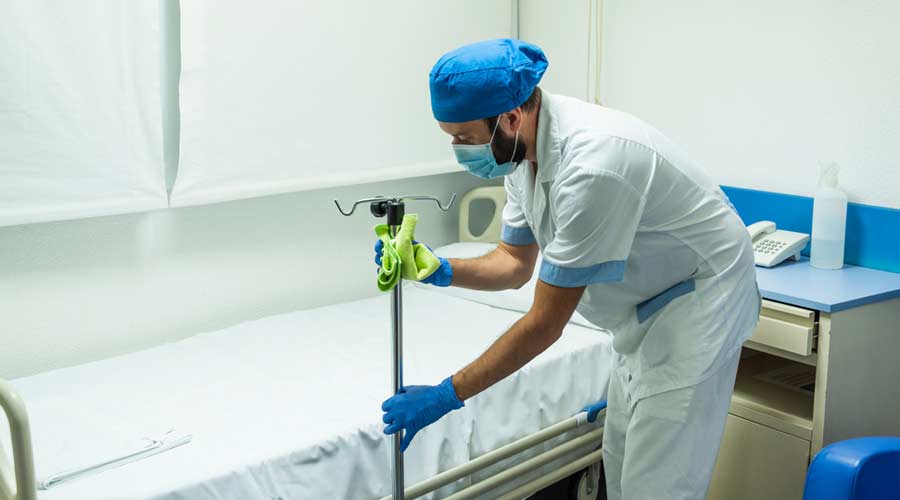Even as the COVID-19 pandemic moves through its third year, healthcare facilities managers are taking a hard look at nearly every aspect of their buildings and operations in order to learn lessons from the pandemic that they can use to create safer and healthier interior environments.
HVAC systems — specifically ventilation and filtration — have come under the closest scrutiny as managers look to prevent the spread of airborne illnesses through facilities, imperiling staff and patients alike.
But not far behind these systems in terms of looking for lessons are the processes and materials involved in environmental services departments responsible for cleaning and sanitizing interior surfaces where disease-causing substances often lurk.
Now, a pilot study published in the American Journal of Infection Control (AJIC) provides the first, quantified overview of the strengths and challenges associated with healthcare environmental hygiene (HEH) practices in healthcare facilities.
HEH is a component of infection prevention and control that comprises the cleaning of all surfaces in hospital rooms. It relies on multiple factors, including: adequate cleaning products and supplies; best practices-based protocols; training, education and quality control; and the institutional safety climate. Departments responsible for HEH face numerous challenges, including limited budgets, an unstable workforce, and a lack of access to safe and effective products.
Overall, 98 percent of participating hospitals lacked some or all of the five components of the multimodal infection prevention and control improvement strategy. Other key findings include:
- 71 percent of respondents felt their facility gave enough importance to HEH, and 47 percent felt that the budget allocated for cleaning and disinfection was adequate.
- 67 percent of hospitals reported that necessary HEH products and supplies were always available, 27 percent said they were sometimes available, and 6 percent said they were never or rarely available. Among the 90 percent of hospitals that reported HEH equipment and supplies were available, 16 percent still could not perform adequate sterilization because equipment was not in good working condition.
- Just over 50 percent of hospitals reported that their protocols were based on best practices and updated regularly.
- Only 22 percent of hospitals provided or required comprehensive formal HEH training upon hiring, and 28 percent did not provide or require any formal training.

 Contaminants Under Foot: A Closer Look at Patient Room Floors
Contaminants Under Foot: A Closer Look at Patient Room Floors Power Outages Largely Driven by Extreme Weather Events
Power Outages Largely Driven by Extreme Weather Events Nemours Children's Health Opens New Moseley Foundation Institute Hospital
Nemours Children's Health Opens New Moseley Foundation Institute Hospital Code Compliance Isn't Enough for Healthcare Resilience
Code Compliance Isn't Enough for Healthcare Resilience Ribbon Cutting Marks First Phase Completion for New Montefiore Einstein Facility
Ribbon Cutting Marks First Phase Completion for New Montefiore Einstein Facility